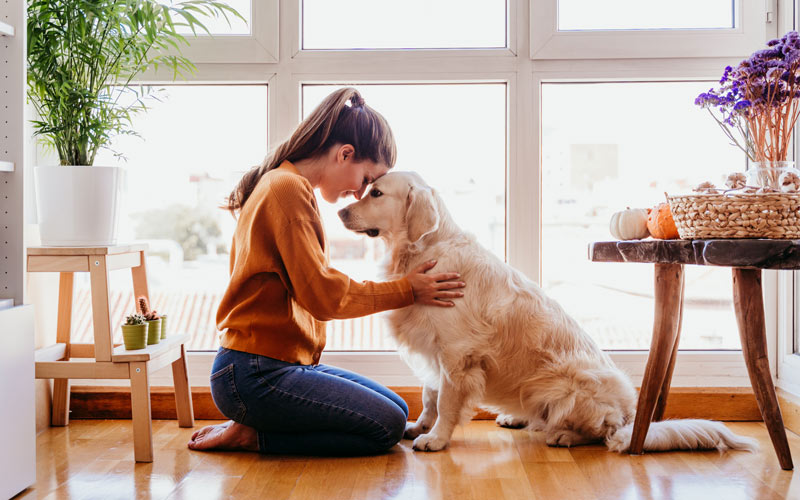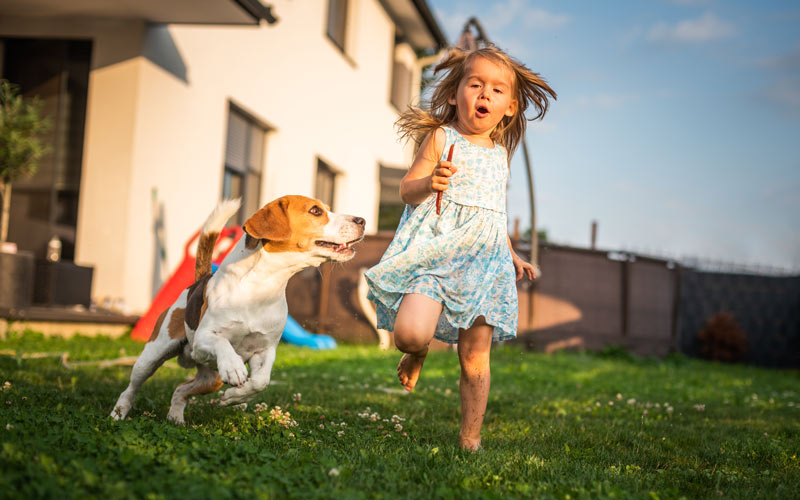Heat stroke in dogs is a severe concern to pet owners, especially in summer. You may care for your dog’s other needs, like providing enough nutrition and healthcare. However, your canine friend can be in serious trouble if you don’t consider the weather.
What is Heat Stroke in Dogs?
Heat stroke is also known as heat exhaustion in dogs. A dog overheating happens when your pet’s temperature reaches over 102.2 degrees.
Unlike humans, dogs don’t have sweat glands all over their bodies to cool down. Instead, they sweat only through their paw pads. They also lower their temperature through panting. As a result, they can overheat much faster than humans.
How does hot weather affect dogs? Heat stroke in dogs happens more often when the weather is hot. It’s also more likely when it’s humid, even if the temperature isn’t high. Dogs may also overheat when they play continuously without cooling down.
Moreover, they may overheat in high temperatures with insufficient water. Regardless of the cause, heat stroke can be life-threatening in dogs. Thus, taking measures to prevent it from happening is crucial.
How Do You Prevent Heat Stroke in Dogs?
You may be observing all the park or playground safety rules and guidelines regarding pets. However, these rules don’t always take pet safety into account.
Preventive measures are important, especially considering heat stroke can result in serious complications and increase the risk of death. This is true even when you apply treatment. With that said, it’s important to take preventive measures. Here are some summer pet safety tips you can keep in mind to prevent heat stroke.
1. Keep Dogs Away From Unventilated Spaces

You often find dogs dying of heat stroke in cars. However, it isn’t just the enclosed space that makes cars dangerous. The lack of ventilation may also give a dog heat stroke.
Hence, we recommend keeping your dog away from unventilated spaces. Don’t leave them in a car or poorly ventilated conservatory. If you’re leaving your dog at home to volunteer at an animal shelter, consider leaving windows or your AC open.
2. Avoid Exercise in Hot Weather
While dogs love to exercise, they shouldn’t strain themselves with too much physical activity in hot weather. Before playing with your dog, you can wait until the temperature cools down. Moreover, it’s best to walk them during cooler times of the day, like early mornings or evenings.
3. Have Cold Water Available
Just like us, dogs can cool down by drinking cold water. We recommend keeping cold water ready for the dog throughout the day.
4. Stay in the Shade
If you go outside, ensure your dog has access to the shade. Make sure your pet isn’t exposed to direct sunlight. If you have a garden, consider putting up a tent or other contraption to keep them cool.
5. Supervise Your Dog

Don’t leave your dog unsupervised when they’re outside on hot days. Make sure to watch over them so you can spot signs of heat stroke early.
6. Don’t Leave Your Dog in the Car
Never leave your pet alone in the car. This holds true even if the parking lot is indoors or if the weather isn’t hot. Let a friend or family member stay with them to watch over them. Moreover, consider keeping the car running with the AC on.
7. Stay Away From Hot Surfaces
Keep your dog away from hot surfaces like concrete, asphalt, and sand. These can get hotter than other surfaces as heat reflects more in them.
8. Keep At-Risk Dogs in Air-Conditioned Spaces
Some dogs are more at risk of heat stroke than others. Brachycephalic dogs, obese canines, and older pets are particularly vulnerable. If your dog has a heart or lung condition, they’re also more prone to heat stroke.
It’s better to keep these dogs in air-conditioned rooms on hot days. You can let them out for short periods to go do their business. But generally, it’s best to keep them indoors.
Signs of Heat Stroke in Dogs
It’s always important to stay aware of the signs, even if you follow preventive measures. Symptoms of a heat stroke in dogs include the following:
- Red gums that turn blue over time
- Increased panting
- Agitated, restless, or distressed behavior
- High heart rate
- Excessive drooling or salivating
- Bright red tongue
- Dizziness
- Difficulty breathing
- Seizures
- Weakness or lethargy
- Muscle tremors
- Lack of coordination, mental confusion, or stumbling
- Vomiting or diarrhea (with or without blood)
- Shock, collapse, or unresponsiveness
What to Do if Your Dog Gets a Heat Stroke

Check the symptoms if you think you have a dog with heat stroke. You may address mild cases, like when they only exhibit excessive panting. In these cases, take your dog to a cooler area immediately. Offer them some cool (not cold) water. Let your dog drink it slowly and in small amounts. Don’t let them gulp it down quickly.
Then take their rectal temperature to see how high it is. If it exceeds 102.2 degrees, blanket your dog’s skin with cool, wet towels. Do so on the abdomen, groin, head, and neck. You may also wipe their paw pads with rubbing alcohol.
Remember to cool your pet down slowly. Don’t shock them or splash them with cold water. This may harm them and change their blood pressure. Your dog’s temperature should lower in 10 minutes. You can stop cooling them down once their rectal temperature hits 102.5 degrees.
Act quickly if your dog’s symptoms are severe or don’t improve. Heat stroke progresses fast, so take them to the nearest accredited vet. They may administer IV fluids, provide medication, and manage your dog’s blood pressure.
What Temperature Is Too Hot for Dogs Outside?
You may still want to go out with your dogs during the summer. What temperature is too hot for dogs to walk? It’s better to keep your dog indoors if the weather feels hot. Heat stroke may set in when the temperature hits over 90 degrees. It’s also important to keep dogs indoors when it’s humid. That’s because even if it’s not hot, humidity may heighten your dog’s risk of heat stroke.
On the other hand, it’s important to keep your dog away from extreme temperatures if they’re still puppies. You should also keep more vulnerable dogs away from hot environments, such as brachycephalic or toy breeds.
How Long Can a Dog Be Outside in the Heat?
Some pet owners tether their dogs outside and don’t allow them indoors. While some states disallow tethering outdoors, owners may still do so in areas with relaxed laws. With that said, how long can a dog be outside in the heat?
Puppies can stay outdoors for a few hours when the temperature is between 60 and 90 degrees. They can only spend 10 to 15 minutes outdoors if the temperature exceeds the 90-degree threshold.
The time may depend on the breed or condition of fully grown dogs. Regardless, it’s best to limit their time outside. Keep your dogs indoors as much as possible. Also, certain breeds, such as those with thicker or longer fur, are more prone to heat.
Be Careful in Hot Weather
Heat stroke in dogs can be fatal even after treatment. That’s why it’s crucial to stop it from happening in the first place. Remember to remember these preventive tips whenever you go out with your pet. It’s especially important in the summer when temperatures rise.
You Can Also Read These:




